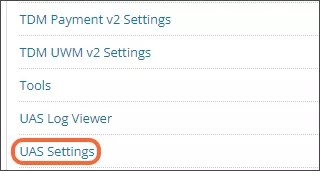Universal Authentication System v2 (UAS) provides Single Sign-On (SSO) authentication and authentication routing options. UAS can be configured to handle a variety of incoming authentication protocols and convert those into a SAML login request for systems that support an IdP-initiated login. UAS provides a way to integrate other applications into Learn without the overhead of managing applications in an Enterprise Identity Provider authentication solution.
UAS allows for:
- SSO authentication.
- MAC protocol (replaces the traditional auto-signon building block).
- LTI.
- CAC / PIV for Government agencies.
- Authentication routing to a pre-defined authentication method based on the user’s institution role.
- Self-registration of new users to a Learn system.
The client is responsible for developing the logic to generate the signature in their application. UAS will accept the signature, validate it, and, if it’s valid, generate a SAML login request to Learn. MAC auto sign-on supports the ability to launch to a specified course or forward to a URL within Learn so you can build better integrated external applications.
Configuring UAS is a multi-step process. You configure the incoming authentication request protocol and the outgoing SAML response in the UAS Settings. This service will act as a SAML proxy for your application. In Learn, you configure a SAML authentication based on your UAS SAML configuration to provide proper authorization into Learn.
Access UAS settings
- Sign in to Blackboard Learn.
- Access the Admin panel.
- Select UAS Settings under Tools and Utilities.
You will need at least two configured and enabled authentication adapters: an incoming adapter and the outgoing SAML adapter.

